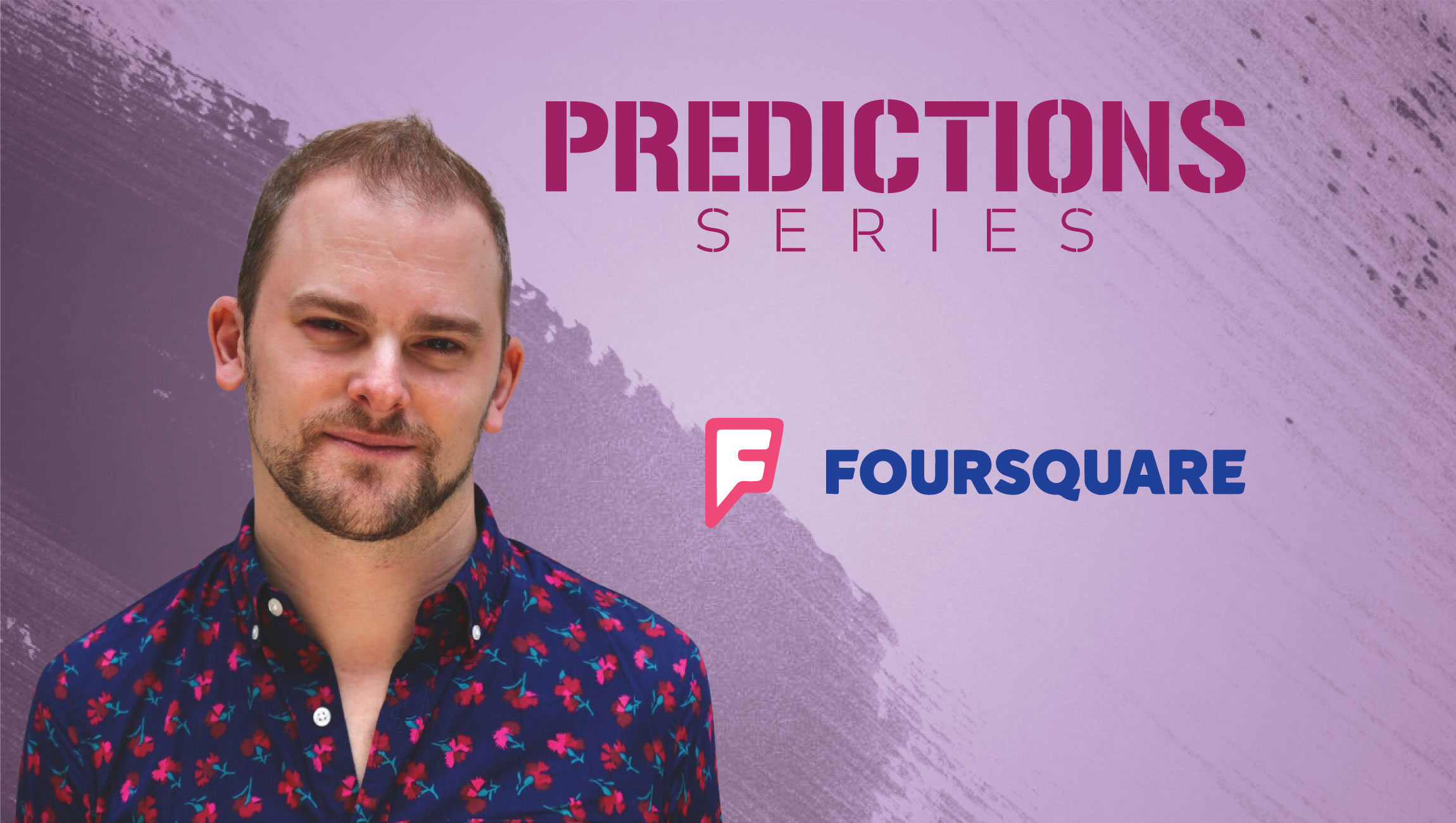Could you tell us what comes to mind when you look back at the decade, which technologies made the most profound impact on your work and career?
For me, the biggest impact has been the proliferation and adoption of mobile phones. Back when I first started working in digital technology, the industry players always commented and even joked that this was going to be the “year of mobile,” but year after year that didn’t materialize. The tracking, targeting, and measurement was very fragmented, and no one really cracked what mobile marketing and data really was. Since those days, we have gone from expecting the “year of mobile” to having a mobile device in the pockets and hands of over 60% of all people in the world. That level of penetration is incredible and shows why developing nations like Indonesia, India, and Vietnam are becoming major hubs for innovation and startups.
People are enabled to be connected whenever they want at high speeds and that has enabled the surrounding industry to grow at astounding rates and has shown that companies like Foursquare can help enable unique mobile experiences that scale in a meaningful way.
What would be the most powerful technology development of the decade for you?
The advancement of affordable, powerful smartphones from Samsung, Oppo, Vivo, Huawei, etc. For years, the iPhone was the market leader in capability and technology, but now that the many Asian phone OEMs have caught up on technology, quality, and user experience, they have evened the playing field for consumers and made the actual device a commodity rather than a luxury good. This has spurred the growth of connected devices and IoT and put the phone at the center of people’s digital lives, which again enables the entire mobile ecosystem to advance and improve.
What kind of technology do you handle and promote for Foursquare?
In Asia, we power the mapping technology, many of the most popular apps including ride-hailing and food delivery apps. For example, if you type a location that you want to be dropped off into your ride-hailing app, the chances are we would provide the location technology that underpins this.
In addition to this, we provide highly accurate Point Of Interest (POI) data. This data allows us to not only know that there is a business on a particular street corner, but that business is an F&B outlet, it is a coffee shop and sells local ‘Kopi’. This highly localized data can be used by the kind of apps I mentioned earlier, but also for brands who want to advertise and reach a specific audience. A good example is Quadrant Audiences which combines mobile-based location data with our own Foursquare Places POI data, allowing brands to create custom audience segments and then market to them.
How location data has evolved and improved over the past few years and how much more sophisticated it is set to become?
Location data has evolved massively in the past few years thanks to our growing use of mobile as well as social media. In Southeast Asia, 55% of the population are avid social media users and they often check-in to specific places providing accurate and timely insights into physical places and how they interact with their environment. Concurrently, mobile use has grown in the region and this is set to continue as Gen Z come of age. So now we are able to marry accurate POI data generated from social media with highly accurate SDK data from mobile to create location data solutions that really work for advertisers and marketers.
How advertisers and agencies can leverage highly accurate POI data for their own Campaigns and Marketing strategies?
The great thing about location data is that it provides a highly accurate and deep picture of customer behavior. These insights can then be merged with other types of data (such as online behavioral data) to help inform Marketing campaigns. I mentioned earlier an example of how POI data can help identify a Kopi shop, this is a good example of how POI data when merged with location data can provide insights that are often missed. Any brand that is seeking to market itself to coffee lovers would need to know the difference between a café and a local Kopi shop in Malaysia or Singapore. A Singaporean who enjoys kopi would not necessarily like western-style coffee, and vice versa. By knowing exactly where their target audience goes, which shops and restaurants they frequent, advertisers can provide much more targeted and accurate campaigns resulting in better Return On Investment (ROI)
Could you tell us about Foursquare’s journey from mobile check-in company to enterprise location-data firm?
I think most people know Foursquare as a check in the application that was targeted at consumers, particularly a few years ago when social media was starting to grow. Today, our business has evolved significantly and while there is still a consumer component, there is now a business-facing component. Foursquare’s industry-leading developer tools have been selected by more than 150,000 developers including AccuWeather, Apple, Samsung, Twitter, Grab, WeChat and LINE and 75 out of the 100 most trafficked brands in America are our customers for advertising, measurement, and analytics solutions.
We allow large companies, small firms, and developers to build geo-aware applications as well as consumer insights for marketers and we are seeing huge demand for this in Asia. We recently passed a number of milestones as a company, we are over US$100 million in revenue, over a thousand large enterprise customers and this year we raised US$150 million, our biggest round yet so this is an exciting time for the company.
How Foursquare’s Location technology powers social media (Twitter), ride-hailing (Uber) and ad agencies (Quadrant Audiences) and government (OneMap)?
For social media platforms such as Twitter we would allow users to tag their location in their Tweets but in a much more contextual and localized way. For instance, rather than simply tagging ‘Kuala Lumpur’, Foursquare would allow you to tag ‘Pavilion Kuala Lumpur – main entrance’. We provide very similar services for ride-hailing apps such as Uber, allowing riders to choose to be dropped off at highly specific locations such as ‘Lobby B’ of a specific building.
In Singapore, we have partnered with the Singapore Land Authority (SLA) to provide rich location information for their OneMap application, allowing users to find individual stores, supermarkets, shops, childcare centers and other locations. The analytics power of Foursquare to make the physical built environment work better is massive and we are continuing to work with government and private partners in this space.
We are also used by advertisers and ad agencies through Quadrant Audiences who merge their own location data with our POI data to enable the creation of customized audiences. Brands are able to predefine their customers into a number of segments including where, such as specific venues and place of interest they visited; industry or sector affinity such as food and beverage, luxury hotel; and even individual brands.
What are your predictions on the future of AI and Location Data platforms in 2020-2024?
Today we help apps and advertisers be more personalized, accurate and relevant but in the future, I think location data will start to improve a much wider range of industries and sectors. For instance, I see location data coming to Healthcare, Real Estate, Urban planning and insurance. Recently, we held a Foursquare for Good competition in eth US for non-profits and the winner was Objective Zero, a firm that provides life-saving resources for veterans, including counseling, especially for veterans who are vulnerable to Post Traumatic Stress Disorder (PTSD). They use location data to identify any anomalous behavior in the veterans’ daily routines to then check-in and make sure they’re ok, using analytics derived from location data to intervene at just the right time. This is just one example of how Location technology can solve social issues and demonstrates the power and potential that it has.
Tyler Simmons, Managing Director APAC at Foursquare, where he helped launch its media and measurement products, Pinpoint and Attribution. He also oversees relationships with publishers, apps, data companies, and advertising technology companies.
Previously, Tyler held roles at Dataran Media, Varick Media Management, and The Exchange Lab. At Varick Media Management, he led the agency trading desks and built the account management team as well as VMM’s in house DMP and other packages and products.
Tyler holds a BS in Psychology from Trinity College.
 Foursquare is a technology company that enriches consumer experiences and informs business decisions through a deep understanding of location intelligence.
Foursquare is a technology company that enriches consumer experiences and informs business decisions through a deep understanding of location intelligence.
Every month, more than 50 million people use the Foursquare City Guide app, Foursquare Swarm check-in app and websites to discover new places, explore the world and check-in. Our community of explorers have left 91 million tips and checked in 12 billion times. Foursquare’s Places API powers location data for Apple, Samsung, Microsoft, Twitter, Uber, Airbnb, and 100,000 other developers. Foursquare’s business solutions also include Pinpoint, Attribution, Pilgrim SDK and Foursquare Analytics, which empower brands to understand and connect to targeted audiences as well as to measure foot traffic and advertising success.
Foursquare has over 250 employees based in New York headquarters and offices in San Francisco, Los Angeles, London, and Singapore. Foursquare is proud to be funded by Union Square Ventures, Andreessen Horowitz, DFJ Growth, Morgan Stanley Alternative Investment Partners and more.



